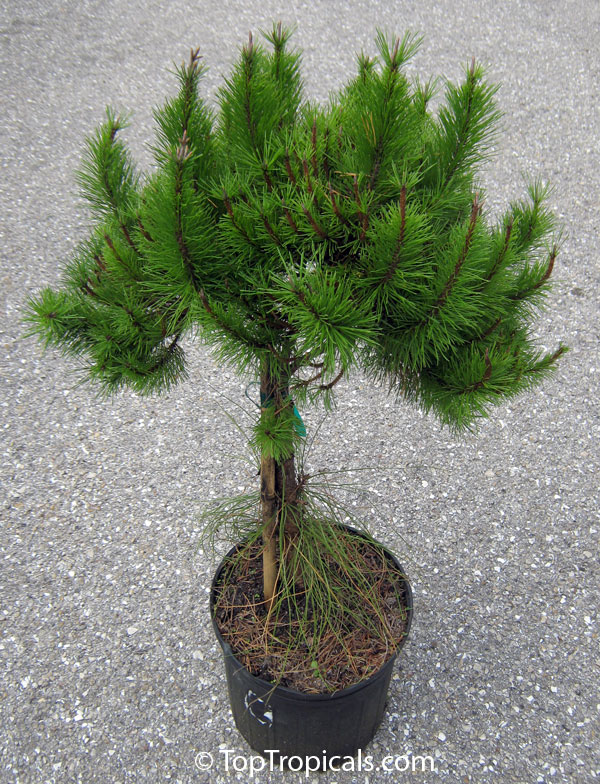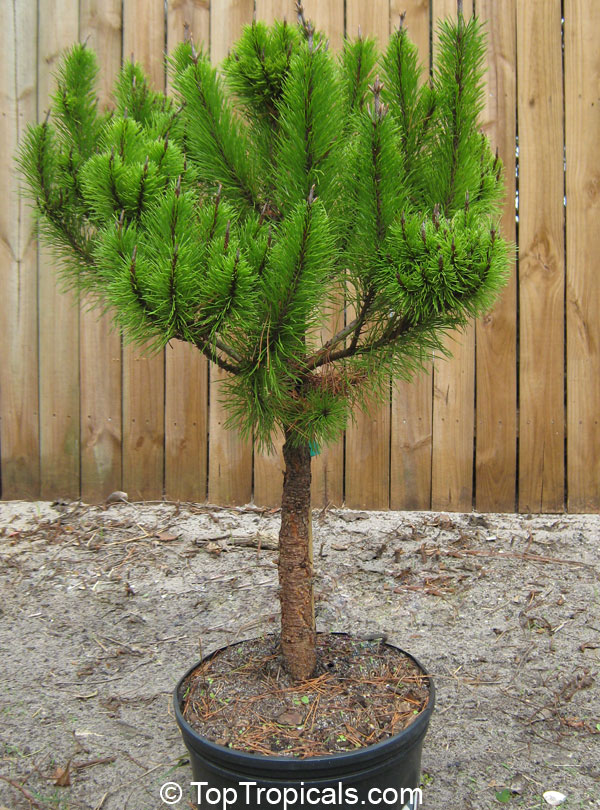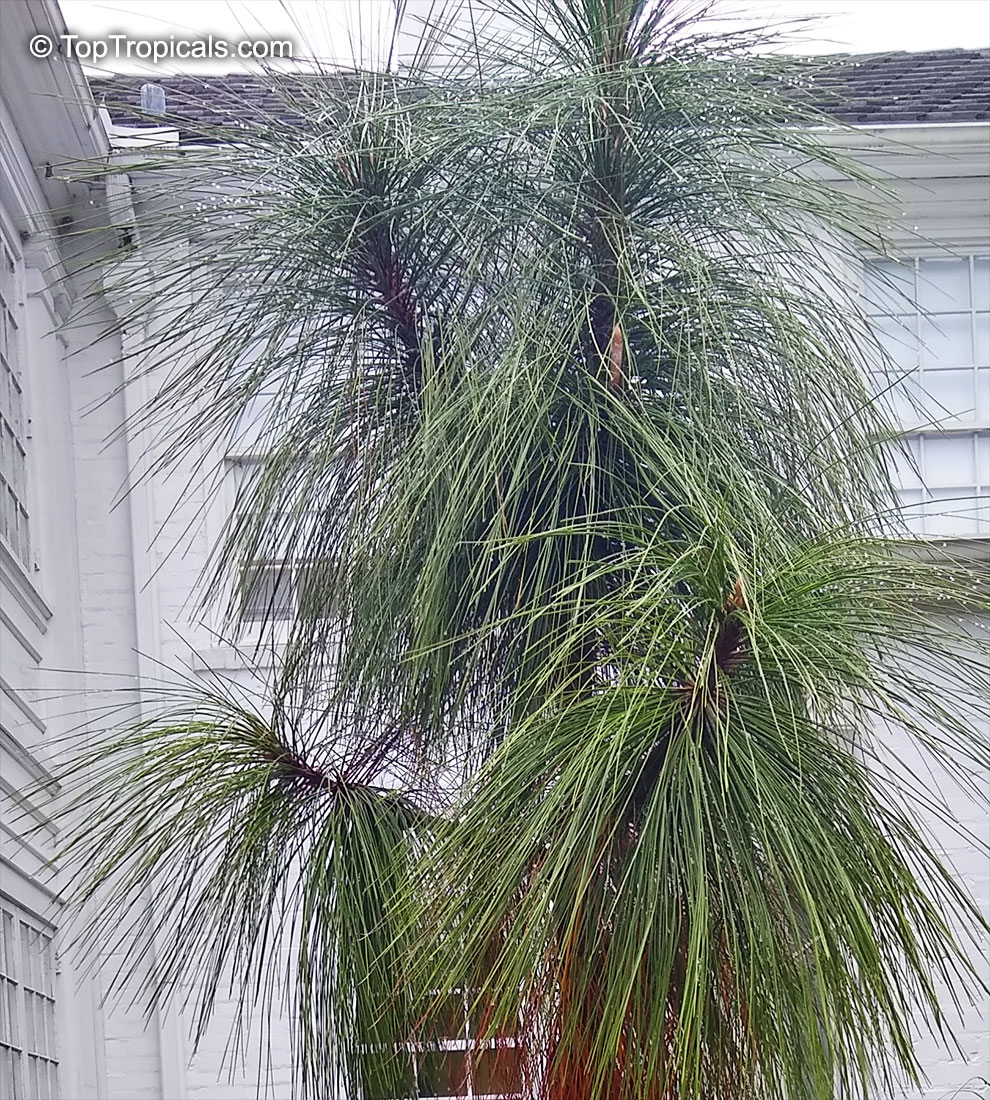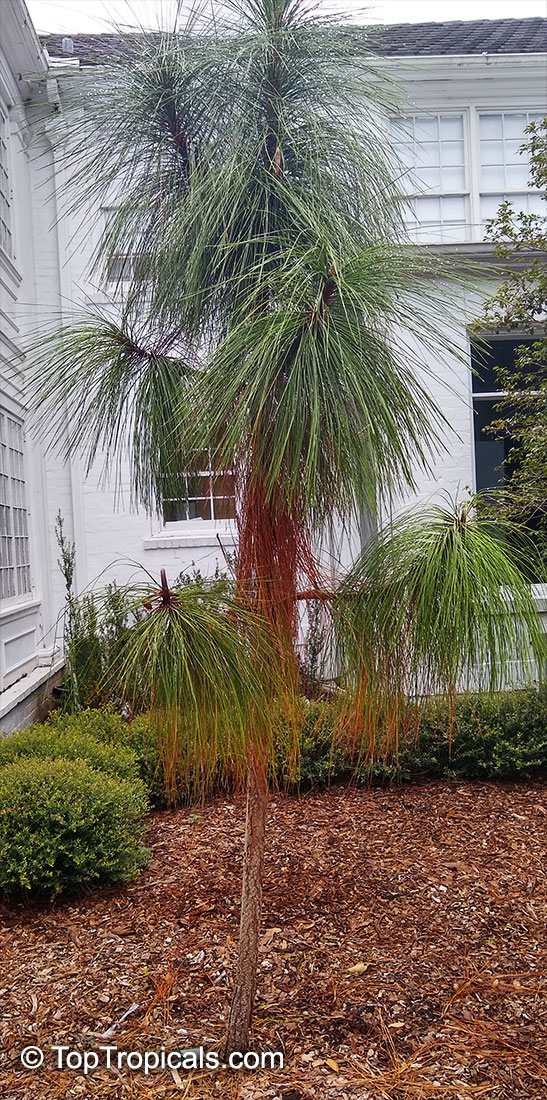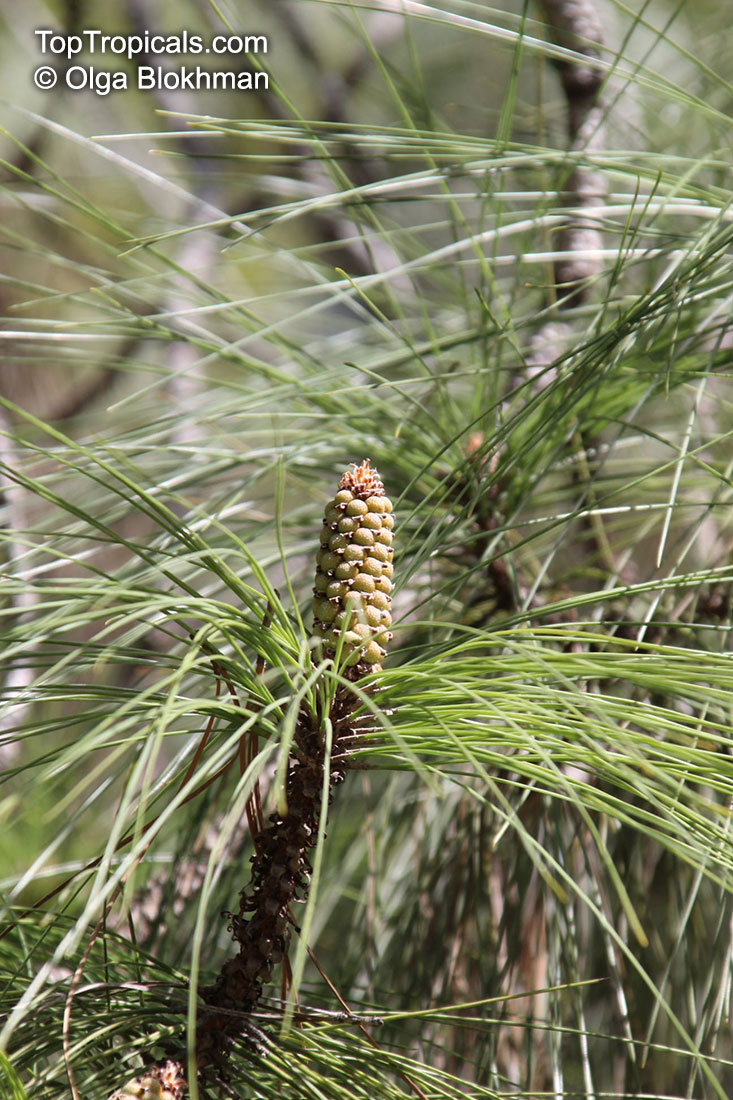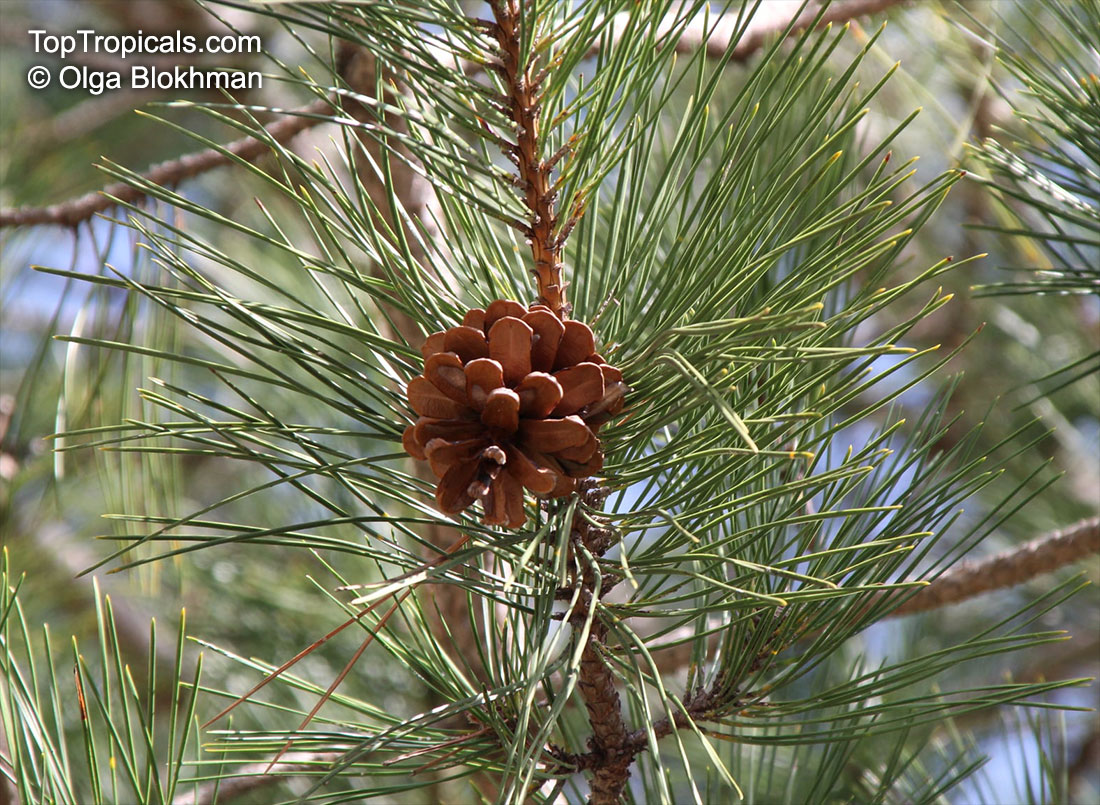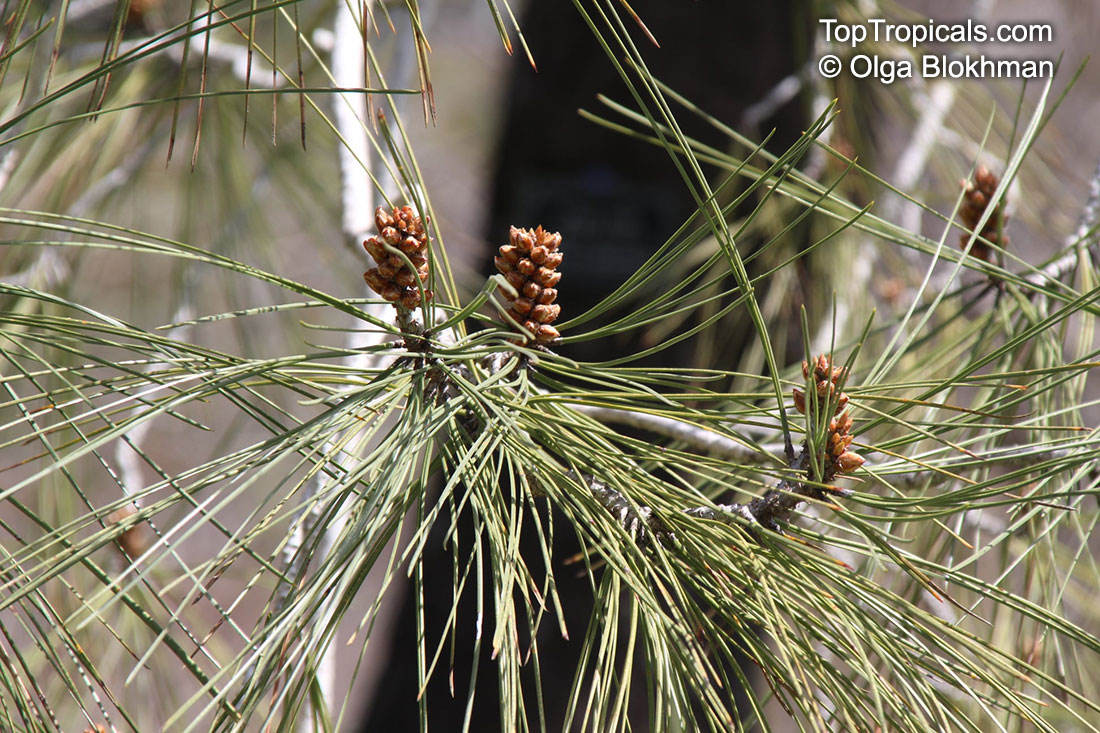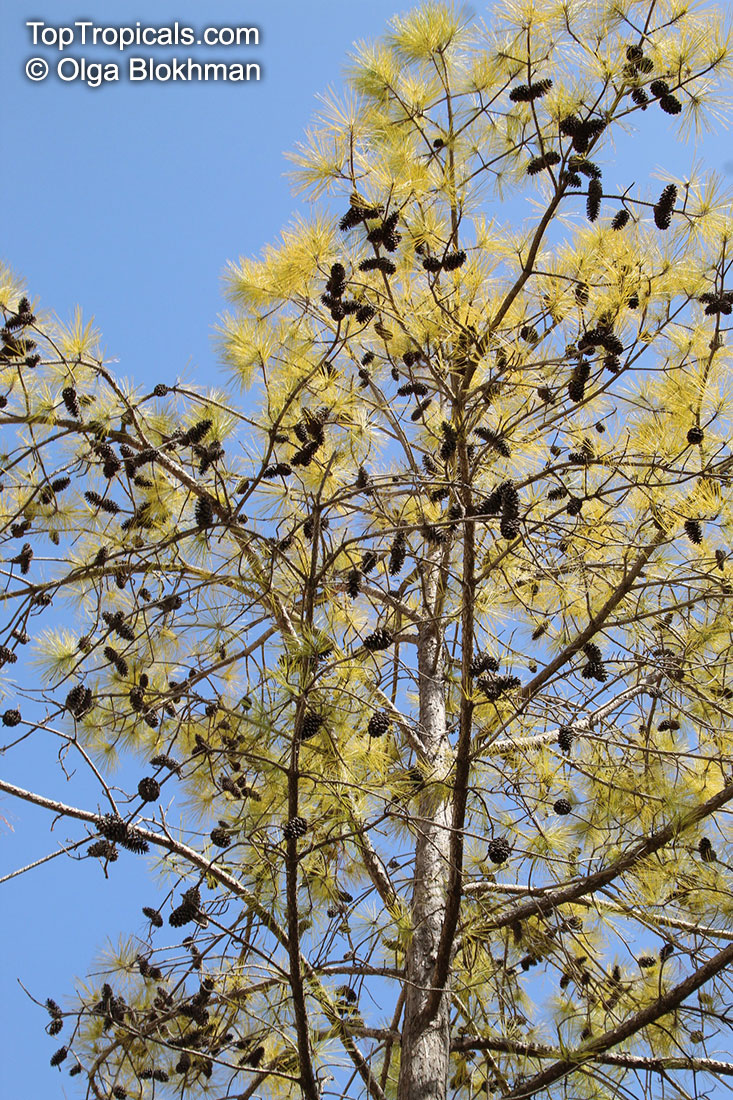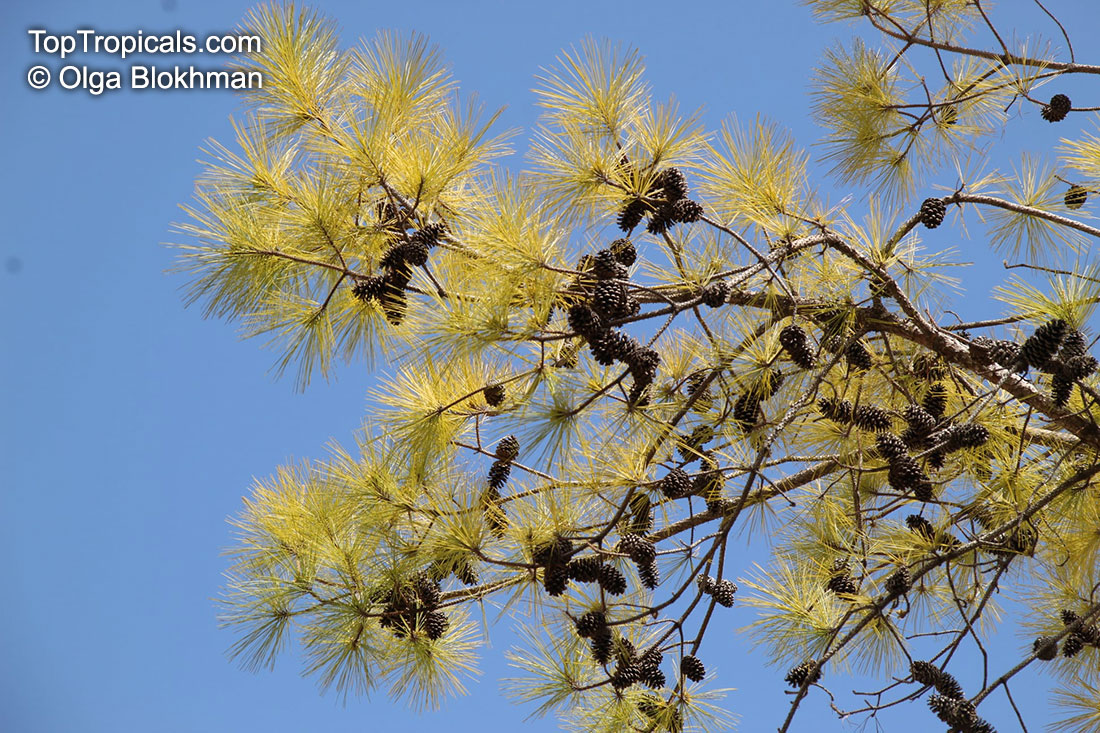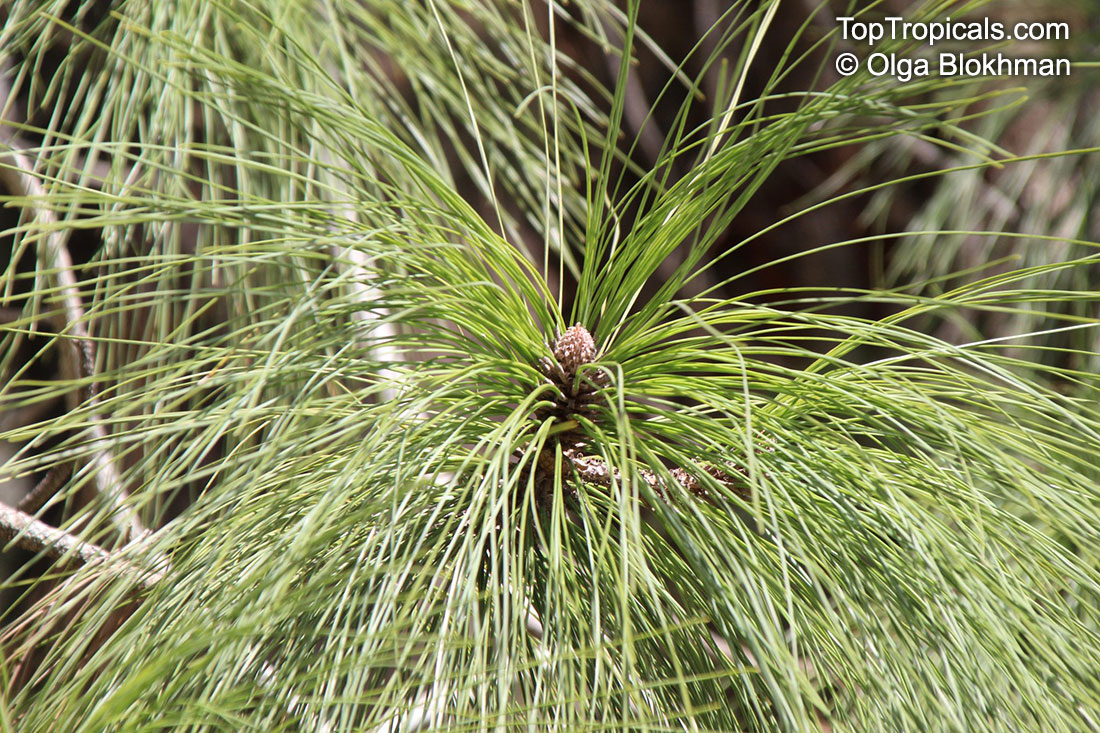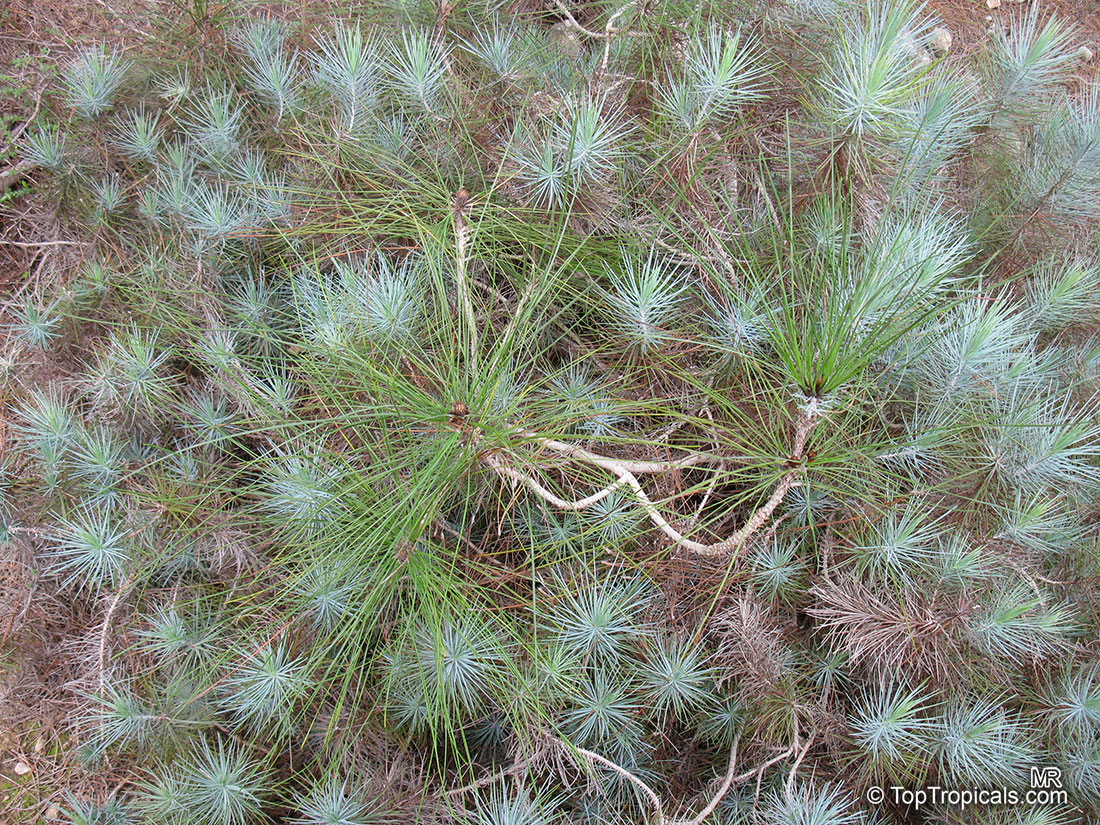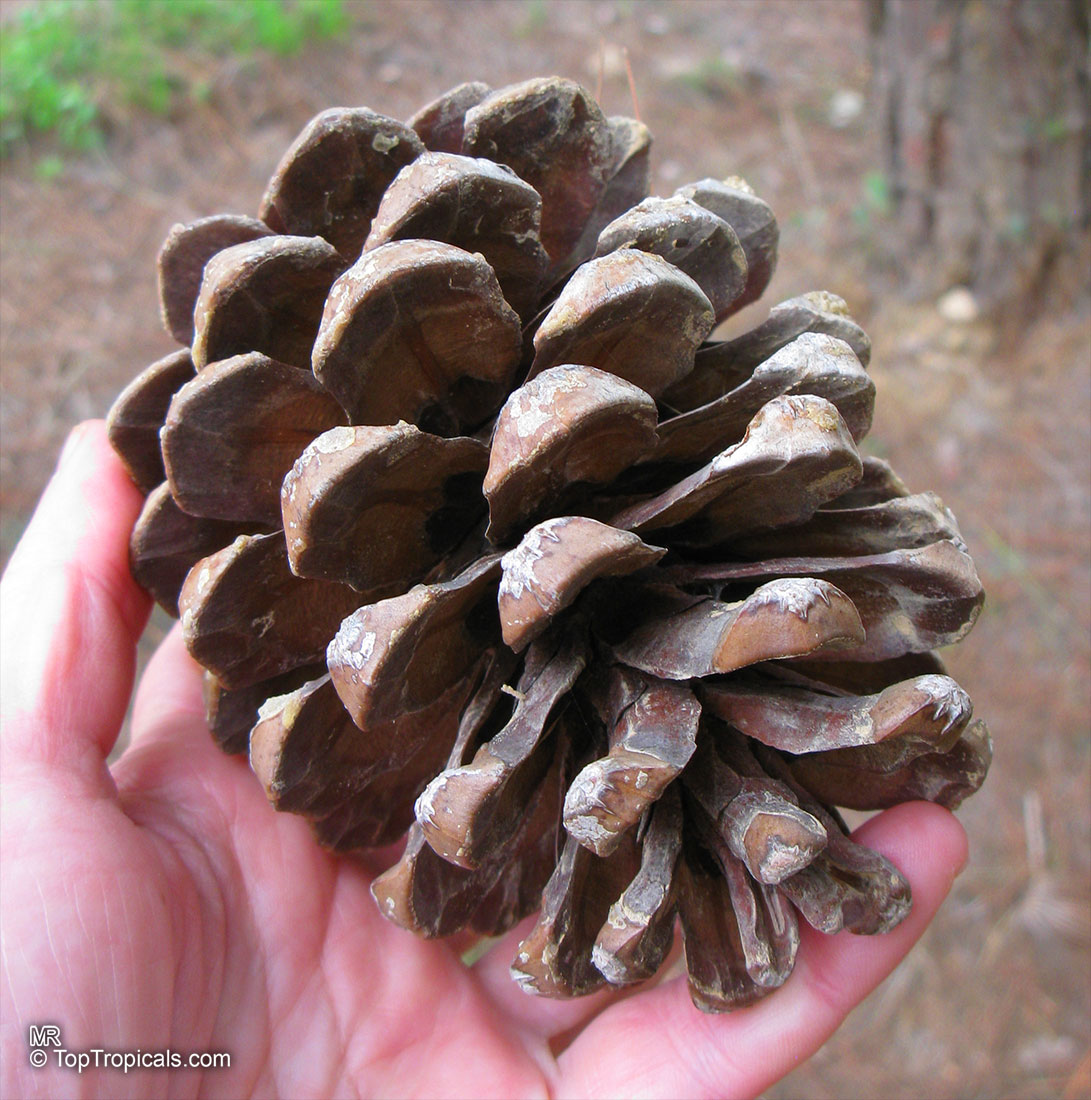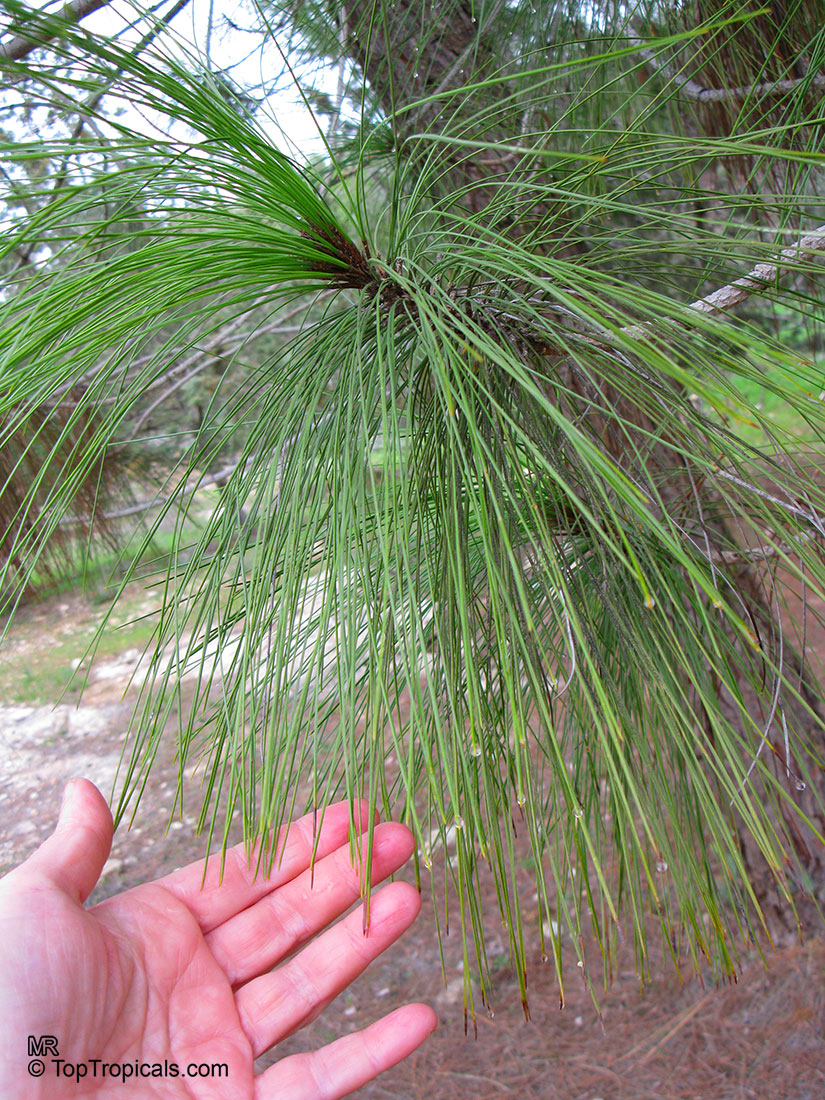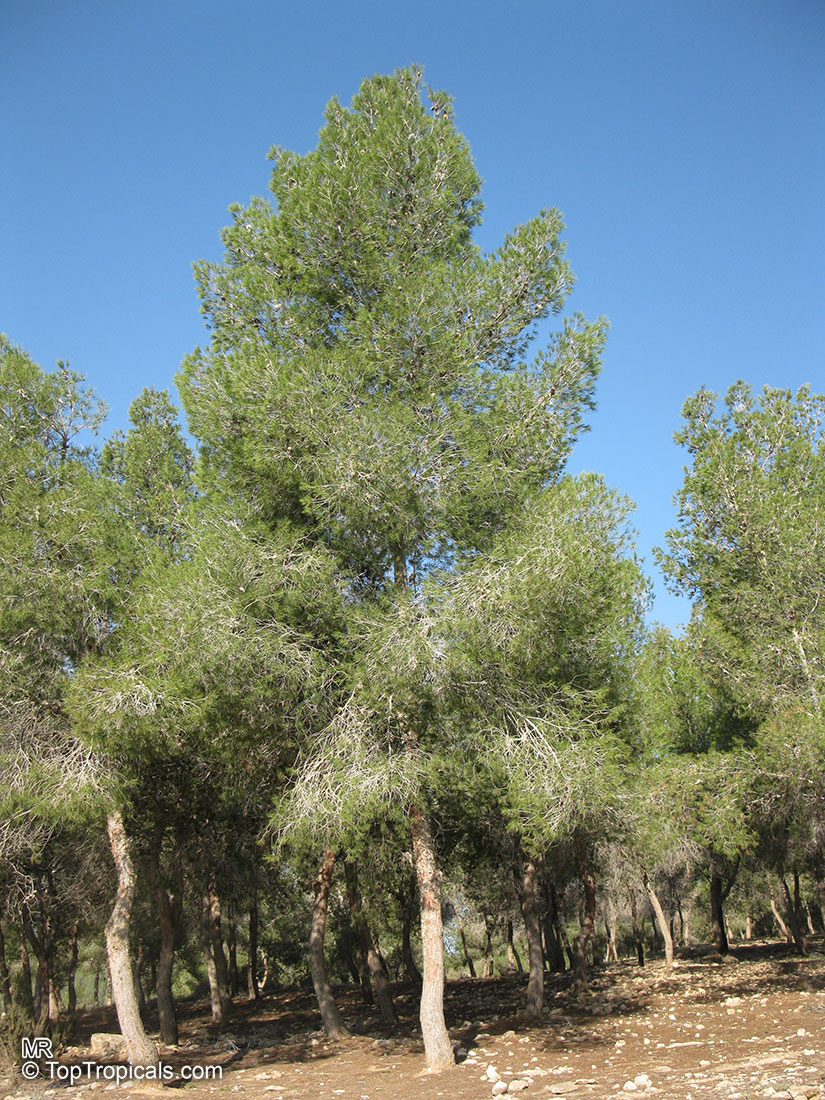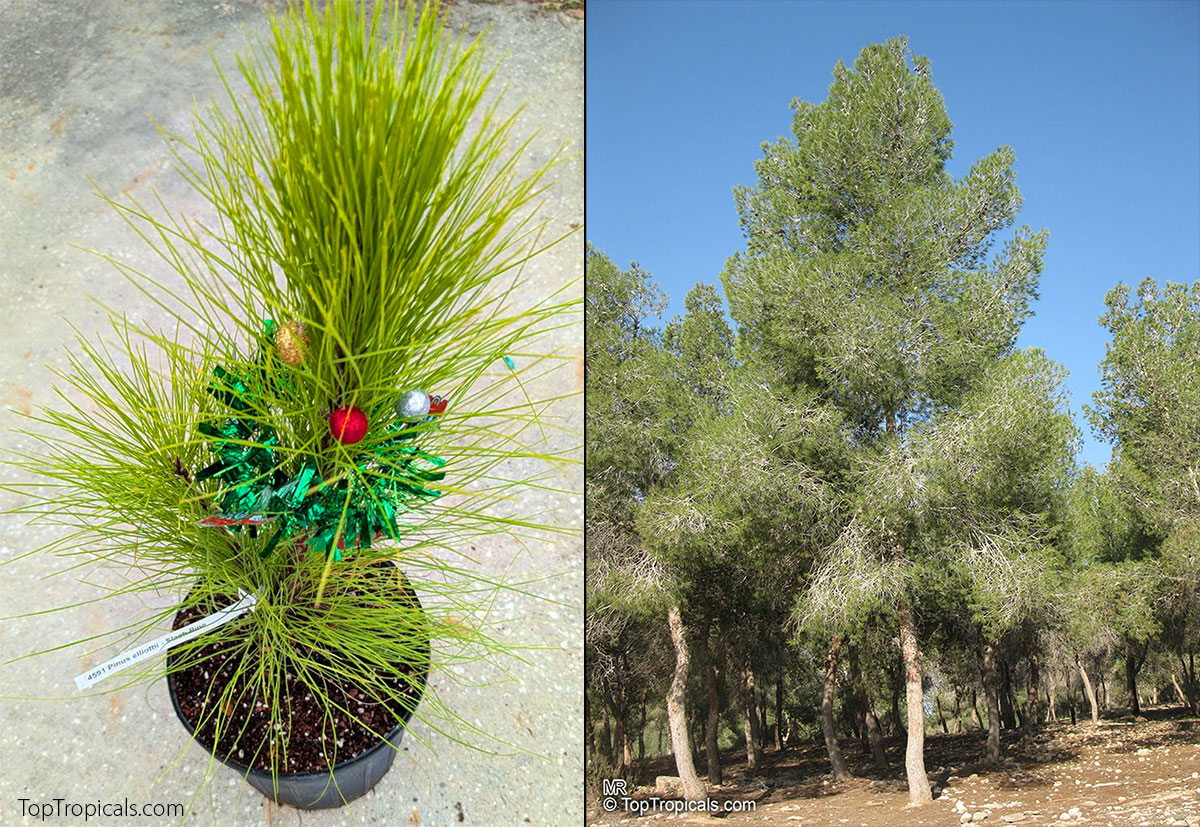Pinaceae - Botanical Family
Top Tropicals Plant Encyclopedia
| Number of plants found: 3 |
Botanical name: Pinus clausa
Common names: Dwarf Sand Pine, Sams Hoola Sand Pine
Family: Pinaceae






Very interesting specimen pine with dwarf habit. It grows only to 5-6 ft tall. Can be grown in a pot as miniature pine tree or in the ground as a unique specimen plant. You can keep it as a real miniature Christmas tree year after year. Has excellent drought resistance once established. Avoid irrigation in the canopy. The dwarf variety shown on the pictures is grafted on regular pine; the large needles on the bottom (below graft) eventually die back.
Botanical name: Pinus palustris
Common name: Longleaf Pine
Family: Pinaceae
Origin: Southeastern United States






Pinus palustris or Longleaf pines are very large trees, growing to heights of 75 to 100 feet, with some specimens reaching as tall as 120 feet or even taller. Longleaf pine takes 100 to 150 years to become full size and may live to be 500 years old. The trunk can expand to a diameter of four feet or more. A distinguishing characteristic of Longleaf pines is their shape: they often grow as an open pyramid or obelisk with a single trunk and an open, wide-spreading crown.
It stores water in its field-drained root system and has a major, wide-spreading root network. The root system remains dense, even in mature trees, allowing it to take up all available water and reducing the competition from other plants.
Longleaf pines are native to the southeastern United States and are typically found in sandy soils on the coastal plain in full sun or semi-shade. It tolerates drought, floods, and fire, exhibiting amazing resilience. In cultivation, it is best suited to warmer climates in USDA zones 9-11 or in pot cultivation in colder regions.
New seedlings do not appear at all tree-like and resemble a dark-green fountain of needles. This form is called the grass stage. During this stage, which lasts for 5-12 years, vertical growth is very slow, and the tree may take a number of years simply to grow ankle high. At that point it begins to pour its energy into stem growth, forming a stem which can grow as much as ten feet in three years. After that burst of vertical growth, the tree begins to form horizontal branches which become ever wider and longer as the tree matures.
These trees require full sun, but they are tolerant of shade, especially newly planted specimens. Longleaf pines grow best in nutrient-rich soils, good drainage, and regular watering. Once established, they require moderate watering on all but very dry sites, and are fairly drought-tolerant. They should be fertilized in the spring with an all-purpose fertilizer to help ensure strong and healthy growth.
A classic Southern pine, Slash Pine features super long, slender needles and straight trunks that add elegance to the landscape. It's tough, wind-resistant, and thrives in sandy, well-drained soil. Great for creating natural screens, attracting wildlife, or restoring native habitats. A low-maintenance evergreen that brings year-round beauty and shade to your garden! Slow growing, interesting specimen pine. Can be grown in a pot as a miniature Christmas tree year after year. Has excellent drought resistance once established.
Recommended Fertilizer: SUNSHINE Robusta - Rapid Growth Booster
Use link to repeat this search:
https://toptropicals.com/cgi-bin/garden_catalog/cat.cgi?search_op=and&keyword_op=and&language=e&family=Pinaceae&number=10
&no_change_lang=1&user=tt&sale=1&first=0
